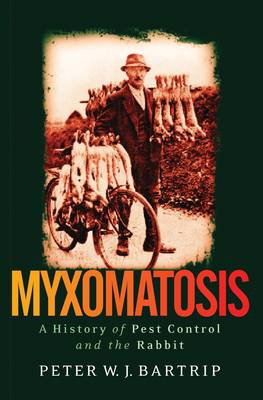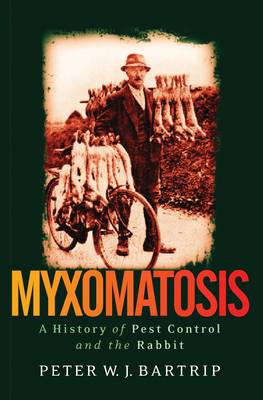
- Retrait gratuit dans votre magasin Club
- 7.000.000 titres dans notre catalogue
- Payer en toute sécurité
- Toujours un magasin près de chez vous
- Retrait gratuit dans votre magasin Club
- 7.000.0000 titres dans notre catalogue
- Payer en toute sécurité
- Toujours un magasin près de chez vous
76,45 €
+ 152 points
Format
Description
Myxomatosis, a viral disease of European wild rabbits, was discovered in South America in the 1890s. It was deliberately introduced in Australia and France in the 1950s and reached Britain in 1953. Within a year it had killed tens of millions of rabbits from Kent to the Shetlands. The British reaction to myxomatosis was mixed: members of the public reared on the tales of Beatrix Potter were appalled and, with meat still rationed, consumers deplored the loss of a cheap and nutritious foodstuff. Many farmers, on the other hand, welcomed the rabbit's demise as a serious agricultural pest and actively spread the disease. However, some lost their livelihood through the spread of Myxomatosis, such as rough shooters who regretted the loss of prey and hatters and furriers who mourned the unavailability of the fur on which they depended.
Rabbits also had champions within the 'establishment'; including Winston Churchill and the Archbishop of York, who both regarded myxomatosis as an abomination. Winston Churchill was personally influential in making its deliberate transmission a criminal offence. Even the farmers and foresters who applauded the rabbit's demise often had qualms about a disease that inflicted such a horrible death. Myxomatosis presented the authorities with difficult questions: should they try to contain the disease, encourage it, or do nothing? Should they take advantage of rabbit depopulation and try to exterminate the animal?
Britain's myxomatosis outbreak has hitherto attracted little historical attention, notwithstanding parallels with other recent animal disease crises. In the first book dedicated to this subject, Peter Bartrip examines how the disease reached Britain. He argues it was not the government who was responsible, as many thought at the time, but instead identifies the individual who may have deliberately brought myxomatosis over from France. Bartrip tracks the spread of the virus throughout the country and considers the response of government and other bodies and the impact of rabbit de-population on agriculture and the natural environment. The cultural significance of myxomatosis in Britain raises topical and controversial issues relating to veterinary medicine, animal rights, the interface between human and animal health, the ethics of pest control by biological means and the politics of environmental meddling. These are important considerations if we are to learn lessons from more recent animal disease crises such as foot and mouth, BSE and H5N1 avian influenza.
Rabbits also had champions within the 'establishment'; including Winston Churchill and the Archbishop of York, who both regarded myxomatosis as an abomination. Winston Churchill was personally influential in making its deliberate transmission a criminal offence. Even the farmers and foresters who applauded the rabbit's demise often had qualms about a disease that inflicted such a horrible death. Myxomatosis presented the authorities with difficult questions: should they try to contain the disease, encourage it, or do nothing? Should they take advantage of rabbit depopulation and try to exterminate the animal?
Britain's myxomatosis outbreak has hitherto attracted little historical attention, notwithstanding parallels with other recent animal disease crises. In the first book dedicated to this subject, Peter Bartrip examines how the disease reached Britain. He argues it was not the government who was responsible, as many thought at the time, but instead identifies the individual who may have deliberately brought myxomatosis over from France. Bartrip tracks the spread of the virus throughout the country and considers the response of government and other bodies and the impact of rabbit de-population on agriculture and the natural environment. The cultural significance of myxomatosis in Britain raises topical and controversial issues relating to veterinary medicine, animal rights, the interface between human and animal health, the ethics of pest control by biological means and the politics of environmental meddling. These are important considerations if we are to learn lessons from more recent animal disease crises such as foot and mouth, BSE and H5N1 avian influenza.
Spécifications
Parties prenantes
- Auteur(s) :
- Editeur:
Contenu
- Nombre de pages :
- 288
- Langue:
- Anglais
Caractéristiques
- EAN:
- 9781350171480
- Date de parution :
- 25-06-20
- Format:
- Livre broché
- Format numérique:
- Trade paperback (VS)
- Dimensions :
- 140 mm x 216 mm
- Poids :
- 335 g

Les avis
Nous publions uniquement les avis qui respectent les conditions requises. Consultez nos conditions pour les avis.






